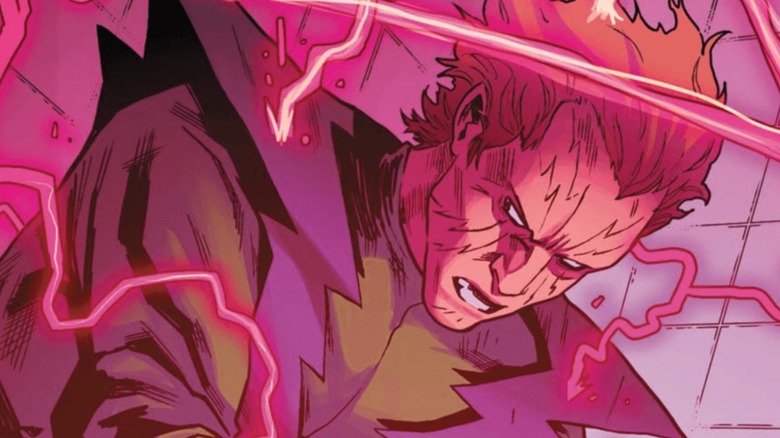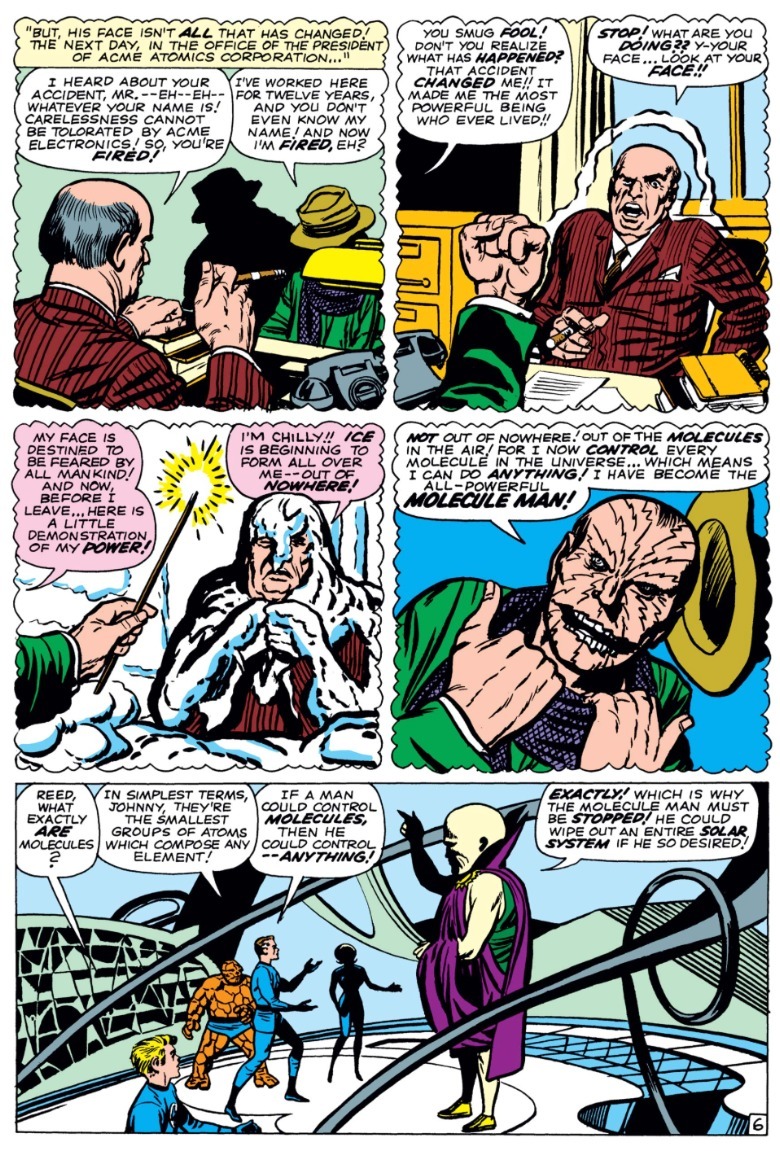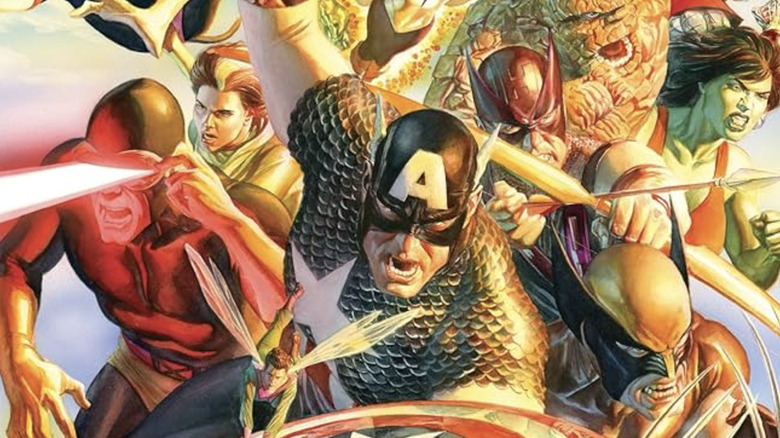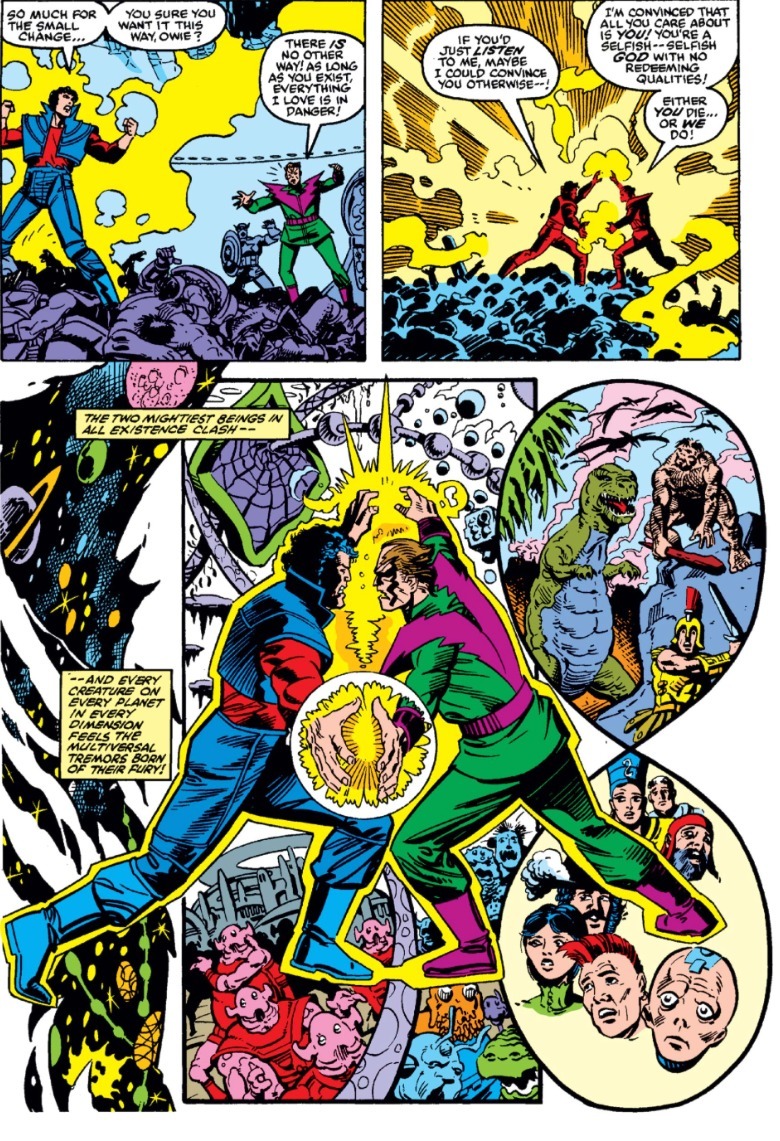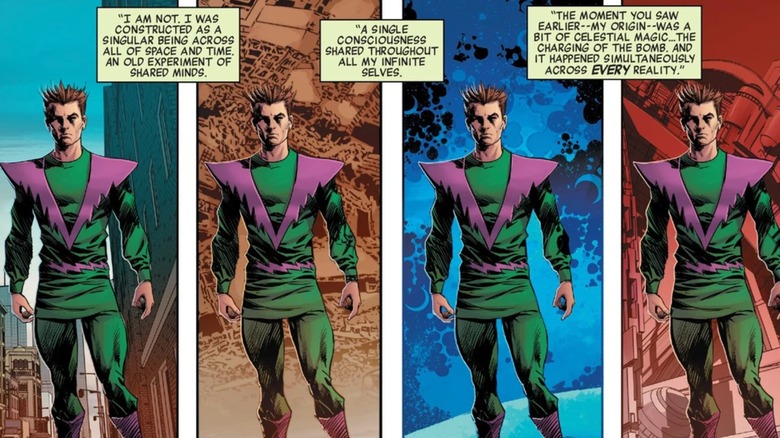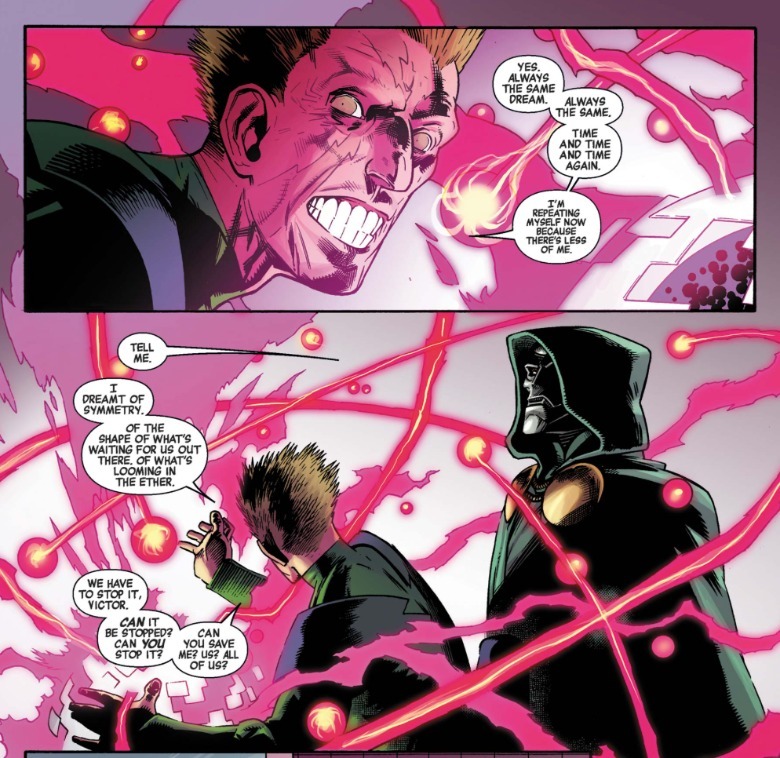The MCU Has Yet To Introduce One Of Marvel's Most Powerful And Rarely Used Characters
Doctor Victor von Doom (Robert Downey Jr.) is about to appear in the Marvel Cinematic Universe, first in "Avengers: Doomsday," then "Avengers: Secret Wars." Marvel readers familiar with "Secret Wars" may expect him to bring another bad guy with him: Owen Reece, the Molecule Man.
Molecule Man isn't an A-list villain like Doom, Magneto, or Thanos. His control over molecules means he might outmatch them, though, since almost everything is made of molecules. (Molecule Man originally channeled his powers with a wand, but that wizard-like practice has been mostly forgotten.)
1963's "Fantastic Four" #20 by Stan Lee and Jack Kirby introduced Molecule Man. He was an anonymous factory worker granted his godlike powers in a nuclear accident. The story contrasts how insignificant he was before with how dangerous he becomes — so dangerous that Uatu the Watcher breaks his vow of nonintervention to help the Four.
Molecule Man soundly beats the Four at first, but then Reed Richards realizes he can only control inorganic molecules. (The issue doubles as a science lesson for young readers on what "molecules" are.) Molecule Man is defeated, and Uatu takes him into captivity.
Lee & Kirby never reused Molecule Man during "Fantastic Four," and he's only occasionally been prominent since. However, Molecule Man was lucky enough to be one of the villains included in 1984's mini-series "Secret Wars." Written by Marvel's then editor-in-chief Jim Shooter and drawn by Bob Zeck and Howard Layton, "Secret Wars" showed many of Earth's superheroes and villains spirited away to Battleworld by the godlike Beyonder.
Molecule Man's connections to the Beyonder got him his biggest role yet in Jonathan Hickman's "Avengers" and "New Avengers," interwoven series that culminated in a pseudo-remake of "Secret Wars" in 2015. It's anyone's guess which "Secret Wars" the movie will take more from — and if it'll find a place for Molecule Man.
Molecule Man is vital to every version of Marvel's Secret Wars
Shortly before "Secret Wars," Jim Shooter used Molecule Man as the villain of a two-part "Avengers" story, issues #215-216. (That story is where the name "Owen Reece" comes from.) The cover of #215 called Molecule Man "infinitely powerful and totally mad," and his actions inside live up to it; inspired by the Silver Surfer's tales of Galactus, he tries to destroy planet Earth.
This might be why Shooter used Molecule Man, an otherwise minor villain, in "Secret Wars." In his last appearance, Molecule Man had given up megalomania and Shooter continued to characterize Molecule Man as a reluctant villain. On Battleworld, he falls for his fellow super-villain Volcana, and they try settling down.
In Shooter's subsequent "Secret Wars II," Molecule Man is the one who finally defeats the Beyonder, because he's the only man who can rival the god's power. Their battle literally shakes infinite time and space asunder (see below, art by Al Milgrom).
In "Fantastic Four" issue #319 ("Secret Wars 3"), writer Steve Englehart retconned Molecule Man's origin; his power-bestowing accident opened a "pinhole" in the Beyonder's home dimension, which garnered the Beyonder's interest. Hickman tweaked this even further for his own "Secret Wars."
The driving force of Hickman's "Avengers" saga is Incursions, where two Earths encroach on and ultimately destroy each other's universe. To stop an Incursion, you must destroy one of the two Earths before their shared time runs out. Some forces are too powerful for even the Avengers to overcome, like universal heat death, the law of reality that everything eventually dies ... or a whole race of Beyonders. These alien gods want to wipe everything away and created Molecule Man to destroy the multiverse.
Molecule Man's Marvel-ous powers are Earth-shattering
Doctor Doom and Molecule Man try to stop the Incursions; Victor has a savior complex and you can't be an emperor when there's nothing left to rule. Traveling through time and dimensions, they discover Molecule Man is the same person in every reality; a connected consciousness split into many bodies. Some dialogue in "New Avengers" #26 (art by Kev Walker) tells me this is where the MCU got the idea of dreams being the lives of your other selves (as comes up in "Doctor Strange in the Multiverse of Madness").
The multiverse is supposed to be an infinite variation of infinite possibilities. Take how there are some worlds where Doom is a hero and his nemesis, Reed Richards, is evil. Molecule Man is identical across every universe because he was directly created by the Beyonders to be a bomb. When each identical iteration of him simultaneously detonates, it'll take the multiverse with it.
Doom and Molecule Man set about pre-emptively killing Molecule Men one-by-one to stop this, recruiting an army of "Black Swans" from destroyed worlds to fulfill this purpose. The Molecule Men murders trigger the Incursions, a back-up plan for universal destruction built in by the Beyonders. So, Doom starts collecting Molecule Men instead, then unleashes the Beyonders' own bomb on them. The Earth-616 Molecule Man takes the Beyonders' power into himself and gives it to Doom, who creates and rules a new Battleworld. When Doom proves himself unworthy of that power in "Secret Wars" #9, Molecule Man gives it to Reed Richards; he and his family rebuild the multiverse together.
Molecule Man boasted in his first appearance that he's "the most powerful being who ever lived." Stories told since have shown that cliché super-villain bluster was hardly an exaggeration — time will tell if the MCU follows that pattern and introduces its own Molecule Man.
